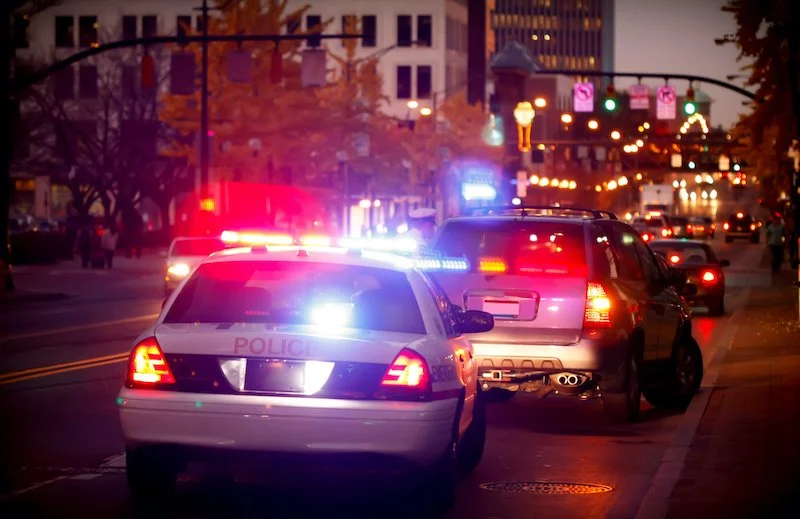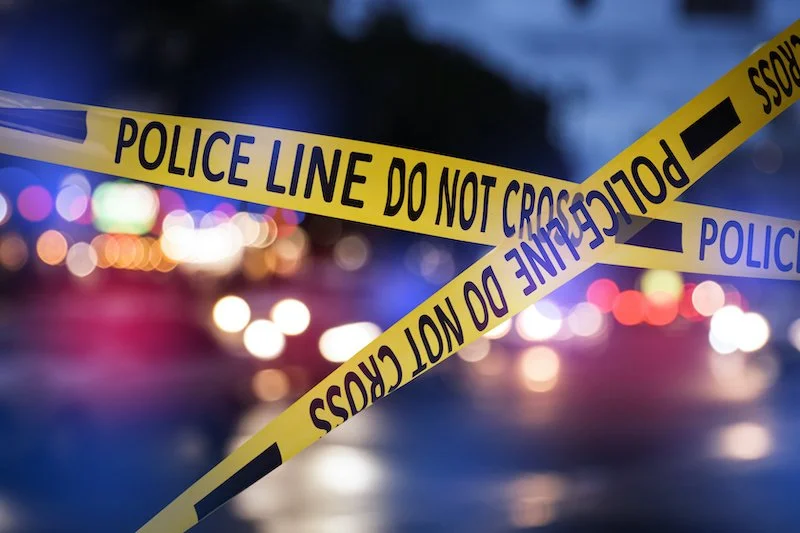Areas of Consulting
Standard of Force
The standard of force in this country is governed by the United States Supreme Court case of Graham v Connor (1989). It outlines that the standard of “objective reasonableness" under the fourth Amendment is how force is to be judged. Although the Supreme Court could not provide a precise definition or mechanical application for objective reasonableness, it recognized that officers must make "split second judgments under circumstances that are tense, uncertain, and rapidly evolving" in each particular force situation. It is what the officer knew at the time the force was used not under 20/20 hindsight. It is to be looked at under the totality of circumstances. The media, public, and police command staff are sometimes too quick to judge an officer's reasonableness of force just by watching a dashboard camera or Body Worn Camera. Although the video is a piece of the overall puzzle, it is not the end all be all.
It is my belief that to properly analyze a force encounter, one must have firsthand knowledge of the standard of force. The reviewer must be able to understand and apply the standard of force under Graham and the four (4) Graham factors that come with it to understand "objective reasonableness.” The four Graham factors are (1) the severity of the crime. This encompasses not just what an officer is responding to, but also what they encounter at the scene, (2) immediacy of the threat toward the officer of other person(s), (3) whether the subject is resisting, and (4) whether the subject is resisting by flight. There are also other non-Graham factors that are highly considered throughout the country in the different District Courts which add to the totality of the circumstances. Everyone that wants to scrutinize the "objective reasonableness" of force should have specialized training in the legal standard.
Individuals should also have knowledge, experience, and/or training in conducting force investigations. This includes how to conduct the investigation, how to interview officers, witnesses, and subjects, case management of the investigation, and interpret forensic examinations completed. They should also understand how to analyze video evidence and conduct frame-by-analysis of the encounter and the limitations that come with video evidence. The video may or may not be the same perception of the officer that was involved in the situation. A force investigation, like any other investigation, should leave no stone unturned which also includes the forensic aspect of the encounter. Reviewers should be able to understand shooting reconstructions, blood stain pattern analysis, and any other forensic examinations that were completed and apply the results to the investigation. Not every force encounter is captured on video, therefore, one must be able to analyze the case also by looking at the evidence collected and interpreting what it all means compared to the other investigative assignments that were completed.
The last aspect of a force encounter that is just as important is understanding the human factor science. Not every force encounter will have a human factor component, but a high number of them will. This includes perception reaction times, threat/stress induced heart rate, perceptual distortions such as tunnel vision and hearing loss, and also understanding the limitations of attention, perception, and decision making. The human body has limited capabilities, which at times, put it at a disadvantage on responding to certain situations.
After knowing and understanding the standard of force and applying it through the Graham standard, completing a thorough and comprehensive investigation, and possibly applying any human factor issues, will ultimately allow the reviewer of a force encounter to make an objective and impartial decision on the reasonableness of the force utilized. I have been recognized as a use of force expert in criminal court, and in administrative court for disciplinary hearings.
Motor Vehicle Pursuits
Along with force encounters, police motor vehicle pursuits are also highly contentious throughout the country. When deciding to pursue and become involved in a police chase, a supervisor and the officer who is pursuing have to decide if the risk of allowing the driver to get away outweighs the risk of continuing the pursuit and placing the public at risk. Individuals who are not involved in the incident have been known to sustain serious bodily injuries and deaths as a result of police pursuits. A great amount of police liability is involved each time an officer decides to pursue a vehicle and the driver. Several factors have to be considered when deciding to continue the pursuit which includes, but not limited to:
(a) likelihood of successful apprehension;
(b) whether the identity of the violator is known so that later apprehension is possible;
(c) degree of risk created by pursuit:
(1) volume, type, speed and direction of vehicular traffic;
(2) nature of the area (residential, commercial, school zone, open highway, etc.);
(3) population density and volume of pedestrian traffic; (4) environmental factors, such as weather and darkness; and road conditions (construction, poor repair,
extreme curves, intersections controlled by traffic signals or signs, ice, etc.); and
I will analyze the totality of the circumstances including video, police incident reports, pursuit guidelines, radio transmissions, crash reports, and witness testimony to decide if the police and the police department followed Attorney General Guidelines and department policy.
Arrests/Detentions
The legal standard for a police officer to stop and detain a citizen is reasonable suspicion under Terry v. Ohio that a citizen has, is, or about to commit a crime. The officer has to point to specific and particularized facts that govern that intrusion and it is based on the totality of the circumstances from an officer’s observations, experience, training, 3rd party information, informants, etc. For an officer to effectuate an arrest on a citizen, the officer must have probable cause or well-grounded suspicion that a citizen has, is, or about to commit a crime. I will analyze the particular set of facts and totality of the circumstances of each case to determine if reasonable suspicion/probable cause existed at that time.
Search Warrant Executions
Often times during criminal investigations, Law Enforcement Officers obtain search warrants to execute on an individual’s private residence with the hopes of gathering evidence to be used for their cases and ultimate prosecution. “No knock” search warrants are very strict in New Jersey to obtain and have to have prosecutorial approval prior to obtaining them with specific criteria along with the approval of a superior court judge. All citizens in this country are protected by the Fourth Amendment of the Unites States which states as follow:
The right of the people to be secure in their persons, houses, papers, and effects, against unreasonable searches and seizures, shall not be violated; and no warrant shall issue except upon probable cause, supported by oath or affirmation, and particularly describing the place to be searched, and the papers and things to be seized.
If a “knock and announce” search warrant was obtained, the police officers have to wait a reasonable amount of time before breaching the entrance into the dwelling. The reasonable amount of time depends on the totality of the circumstances in each particular incident with specific facts to warrant the intrusion. I will analyze each specific case to determine if the police officers had the proper legal authority to execute the warrant and if it was done properly. I have bee recognized as an expert in court for executing search warrants.
Investigations
Police and detectives are regularly assigned to conduct criminal investigations into suspected criminal activity. All investigations, whether an arrest was made at the time the crime was committed or afterward, should be conducted leaving no stone left unturned. All information should be obtained, all possible assignments including interviews and evidence collection should be completed and properly documented. With my vast experience in investigating homicides, suspicious deaths, and officer involved shooting cases, I have developed an immense knowledge of not only how to conduct a complete and thorough investigation, but also how they are to be properly managed and supervised, specifically, with a large contingent of detectives working simultaneously. I will review the case and determine what investigative steps were not conducted, if any, and suggest how the investigation should have continued with follow up assignments. Since I am a licensed and bonded private investigator, I can complete those assignments if requested. I have been recognized as an expert in conducting homicide investigations.
Mental Health Removals
Police officers have the extraordinary authority to have individuals involuntarily transported to a mental health screening facility to be evaluated for possible hospitalization under New Jersey N.J.S.A title 30:4-27.6 which reads:
A State or local law enforcement officer shall take custody of a person and take the person immediately and directly to a screening service if:
a. On the basis of personal observation, the law enforcement officer has reasonable cause to believe that the person is in need of involuntary commitment to treatment;
b. A mental health screener has certified on a form prescribed by the division that based on a screening outreach visit the person is in need of involuntary commitment to treatment and has requested the person be taken to the screening service for a complete assessment;
c. The court orders that a person subject to an order of conditional discharge issued pursuant to subsection c. of section 15 of P.L.1987, c.116 (C.30:4-27.15) who has failed to follow the conditions of the discharge be taken to a screening service for an assessment; or
d. An outpatient treatment provider has certified on a form prescribed by the division that the provider has reasonable cause to believe the person is in need of evaluation for commitment to treatment.
The involvement of the law enforcement authority shall continue at the screening service as long as necessary to protect the safety of the person in custody and the safety of the community from which the person was taken.
It is crucial for police officers involved in these types of incidents to understand the legal standard of “reasonable cause” and be able to articulate in their report what factors allowed them to come to that decision. By not properly documenting what facts they considered, that could open legal actions against them and their departments. Police officers should have a great understanding of their own policies on dealing with individuals with potential mental illness as well as attending training for Crisis Intervention Teams (CIT). Just because someone is believed to have mental illness, it does not mean their rights and liberties can be violated.
Prior to becoming a New Jersey State Trooper, I worked in an outpatient mental health facility as a Campus Police Officer for five years in Massachusetts where I provided security for clients, staff, and visitors. I have attended police training on dealing with mentally ill individuals, non-violent self-defense, and Crisis Intervention Teams (CIT). Understanding the social services that are available to individuals who may be mentally ill and developing a rapport with them could allow an opportunity where force would not have to be utilized in these difficult situations. Allowing for time, distance, and tactical communications, if feasible, may result in a more positive outcome to stabilize and reduce the possibility for injuries to those involved.


